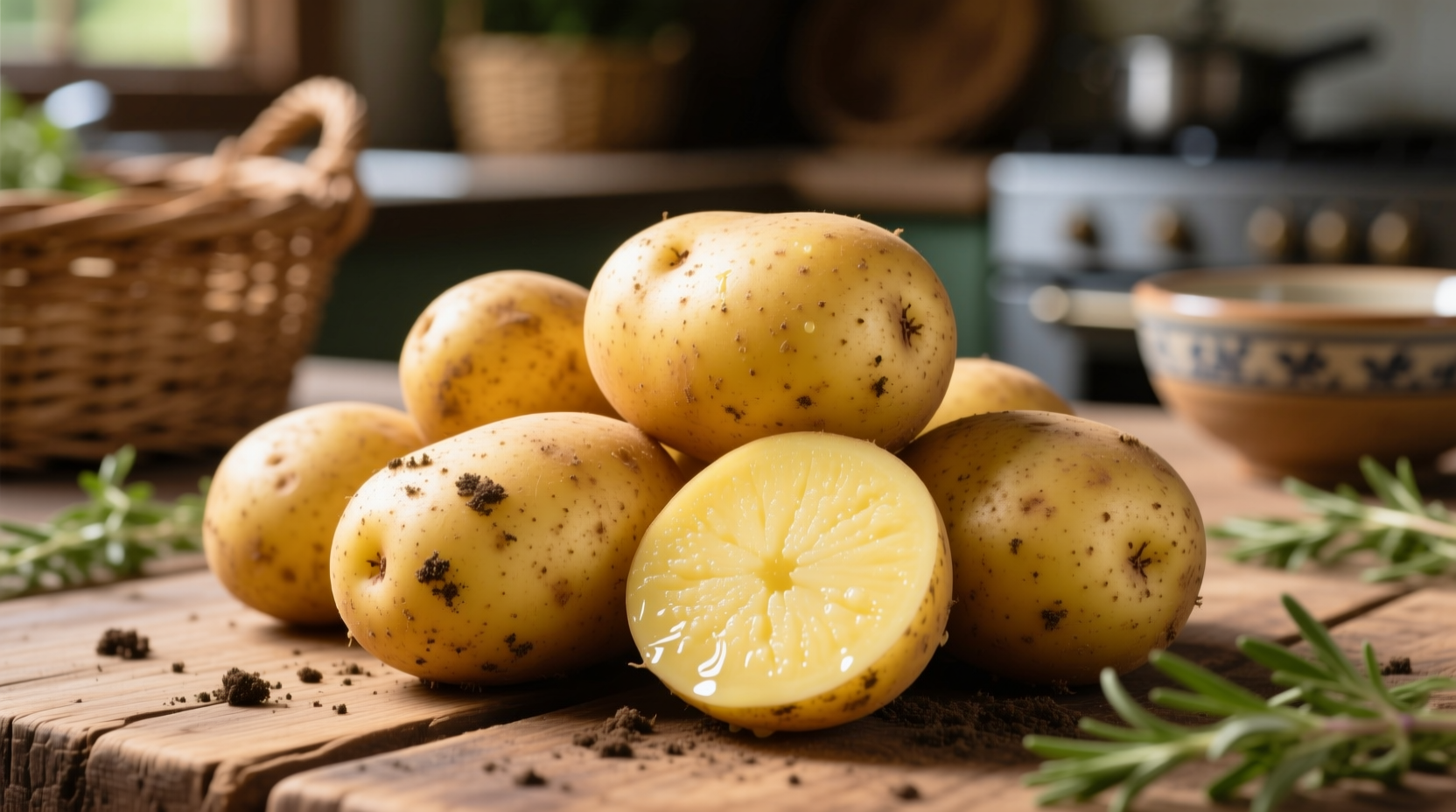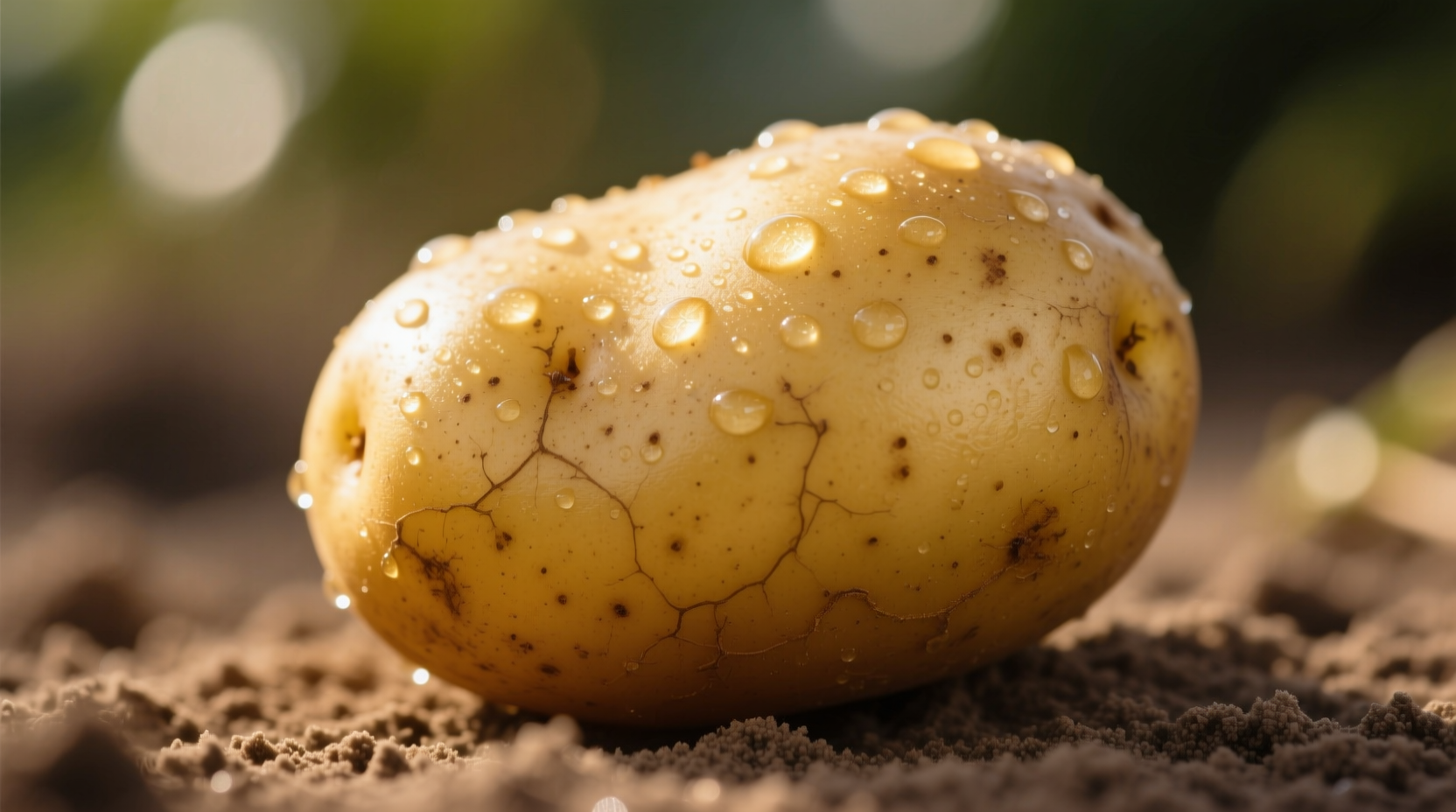When you reach for gold potatoes at the grocery store, you're selecting one of the most versatile spuds in the culinary world. Developed in Canada during the 1960s-1980s, Yukon Gold potatoes revolutionized home cooking with their distinctive yellow flesh and naturally rich flavor profile that requires less added butter or cream in recipes.
What Makes Gold Potatoes Special
Gold potatoes stand apart from other varieties through their unique combination of characteristics. Unlike russet potatoes that fall apart when boiled, gold potatoes maintain structural integrity while still achieving that coveted creamy texture. Their medium starch content (between 15-18%) creates the perfect balance for multiple cooking methods.
Professional chefs consistently choose gold potatoes when they need reliable performance across various cooking techniques. The naturally occurring carotenoids give these potatoes their distinctive yellow hue and contribute to their subtle sweetness that enhances both simple and complex dishes.

Gold Potato Varietal Comparison
| Potato Type | Starch Content | Best Cooking Methods | Flavor Profile | Storage Duration |
|---|---|---|---|---|
| Yukon Gold | Medium (15-18%) | Mashing, roasting, boiling, soups | Naturally buttery, slightly sweet | 2-3 weeks |
| Russet | High (20-22%) | Baking, frying, mashing | Earthy, neutral | 2-3 months |
| Red Bliss | Low (12-14%) | Boiling, salads, roasting | Mild, waxy | 3-4 weeks |
| Fingerling | Medium-Low | Roasting, grilling, salads | Nutty, earthy | 2-3 weeks |
When Gold Potatoes Shine (and When They Don't)
Understanding the context boundaries for gold potatoes ensures perfect results every time. These versatile tubers excel in applications where you want flavor absorption without disintegration:
- Perfect for: Creamy mashed potatoes (use warm milk and minimal butter), roasted potatoes (toss with olive oil at 400°F for 35-40 minutes), potato salads, and soups
- Limited use: French fries (they lack sufficient starch for proper crispness), baked potatoes (skin doesn't crisp as well as russets)
- Avoid: Long-simmering stews where you want potatoes to dissolve slightly to thicken the broth
The USDA Agricultural Research Service confirms that gold potatoes contain approximately 20% more vitamin C than russet varieties and provide 621mg of potassium per serving—more than a banana. This nutritional advantage makes them a smart choice for health-conscious cooks without sacrificing flavor.
Selection and Storage Guide
Choose gold potatoes with smooth, unblemished skin and firm texture. Avoid those with green spots (indicating solanine development) or soft areas. For optimal storage, keep them in a cool, dark place with good ventilation—never in the refrigerator, which converts starches to sugars and creates off-flavors when cooked.
According to Cornell University's College of Agriculture and Life Sciences, properly stored gold potatoes maintain peak quality for 2-3 weeks. Never store them near onions, as the gases onions emit accelerate sprouting and deterioration.
Pro Cooking Techniques
Unlock the full potential of gold potatoes with these professional techniques:
- For perfect mashed potatoes: Boil in well-salted water until just tender, drain thoroughly, then return to the warm pot for 1 minute to evaporate excess moisture before mashing
- Roasting secret: Toss cut potatoes with 1 tablespoon of cornstarch per pound before adding oil—this creates an ultra-crisp exterior while maintaining creamy interior
- Boiling tip: Start potatoes in cold, salted water and bring to a gentle simmer—this ensures even cooking from edge to center
When preparing gold potatoes for salads, slice them ½-inch thick and toss with dressing while still warm to maximize flavor absorption. Their naturally buttery flavor means you can reduce added fats by up to 30% in most recipes while maintaining rich taste.
Evolution of the Gold Potato
The Yukon Gold variety represents decades of careful breeding work. Canadian scientists at the University of Guelph developed this potato through cross-pollination of uLocal (a white potato) and Norgleam (a yellow-fleshed variety) between 1966 and 1980. After extensive field testing, Yukon Gold received official registration in 1987 and quickly gained popularity for its superior culinary properties.
Unlike genetically modified varieties, Yukon Gold potatoes emerged through traditional breeding techniques, making them acceptable to consumers seeking non-GMO options. Their development marked a significant advancement in potato breeding, focusing specifically on flavor and texture rather than just disease resistance or yield.
Maximizing Your Gold Potato Experience
Gold potatoes offer exceptional versatility in the kitchen when handled properly. Their naturally rich flavor means you can create restaurant-quality dishes with minimal ingredients. Whether you're making a simple roasted side dish or a complex gratin, understanding their unique properties ensures perfect results every time.
Remember that gold potatoes work best when you leverage their medium starch content—neither treating them as waxy nor starchy varieties. This understanding transforms ordinary potato dishes into extraordinary culinary experiences with minimal effort.











 浙公网安备
33010002000092号
浙公网安备
33010002000092号 浙B2-20120091-4
浙B2-20120091-4